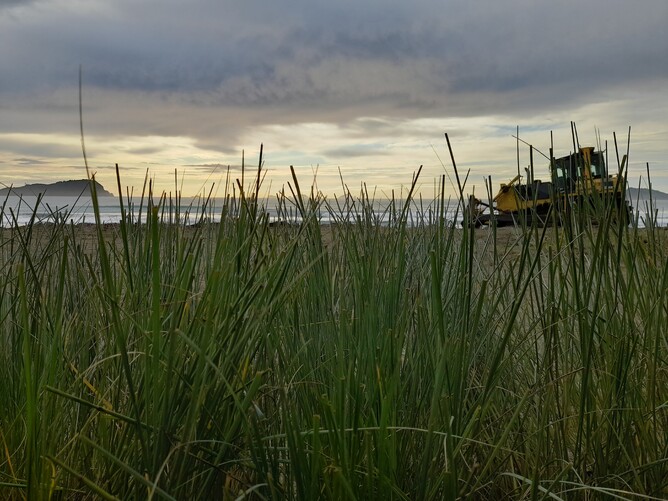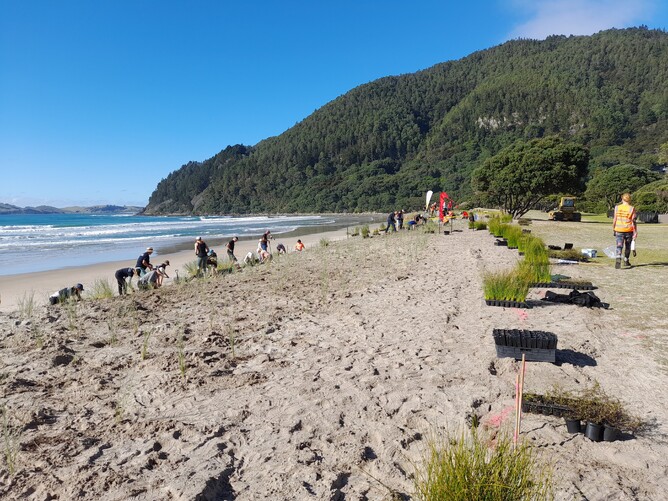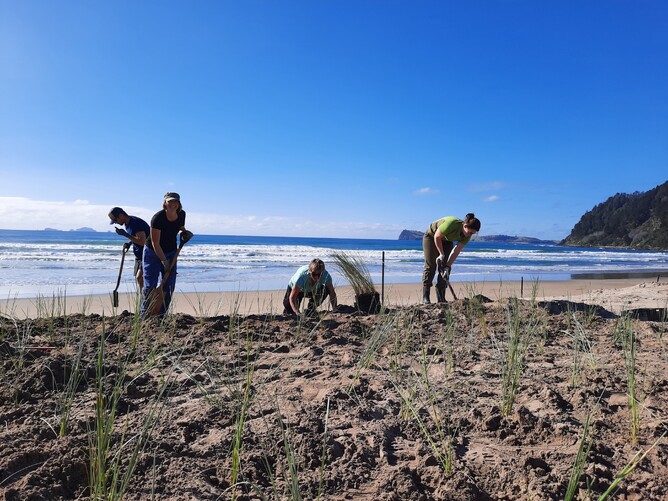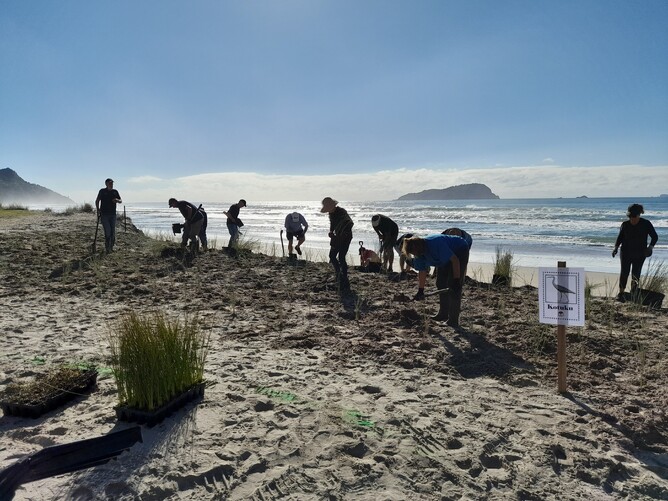We at MBET have long been supporters and strong advocates for the dune restoration projects that Coastcare undertakes on the Coromandel Peninsula.
Coastcare is a collaboration between the Thames Coromandel District Council, and the Waikato Regional Council. They provide plants, expertise and at the moment, one full time Coastal Restoration co-ordinator, who among other things, aligns all the components that go into making a successful dune planting happen.
MBET works closely with this co-ordinator and so we are involved with most of the plantings that happen on the east coast of the peninsula. A typical planting season might involve a dozen or more plantings stretched from Whangapoua Beach in the north to Whangamatā in the south and could involve up to 50,000 plants. Demand is greater than supply and the number of plantings each year is likely to grow, if we can source and/or supply the plants.
But what I want to talk about is the very significant restoration that has recently taken place at Pauanui, about an hour south of Whitianga.
This beach has suffered really severe erosion in the last couple of years, to the extent that any native dune plants were lost, and from the grass reserve down to the beach was a straight drop of 4 to 5 metres in some places. Push ups and replantings were not going to solve this problem.
After lots of discussions and consultations with the community a local Dune Care group was formed and they got right in behind a bold Coastcare plan to retreat the dune back into the reserve. The locals had to agree to trade some of their reserve area, for a greater area of native dune plants, so that there was a much better chance of the plants doing what we want them to do. And that is, not to prevent erosion, but to allow the dune to self repair, and rebuild itself following an erosion event. Establishing a wider dune further away from the high tide mark gives the plants that we put there a better chance of establishing and thriving.
But this is a big beach and even though we were being bold we could only do so much. In the end 270 metres of beach was reshaped and 13,000 dune plants were put in over two days. This is one of the biggest dune restorations ever done all at once, in New Zealand. There was a fantastic turn out of people- lots of locals, but also lots of others who travelled to be there. There was about 100 people there each day and it was great to see so many people supporting such an important project.
A huge thumbs up to Andrea Whitehead, the Coastcare Dune Restoration Co-ordinator, Tanya Patrick who used to hold that position, and Jamie Boyle the TCDC Coastal Scientist, for the work they did, and to the Pauanui Dune Protection Society, for taking on board the science behind dune restoration. Also of course, we thank all the others who worked so hard to make the event so successful. Now we will all watch with interest as the plants establish and the dune begins to operate, and we all have our fingers crossed that there are not too many major winter storms this year. The success of this restoration will be so important to our ability to repeat this approach of retreating the dune, in other places where coastal erosion is causing this sort of problem.




